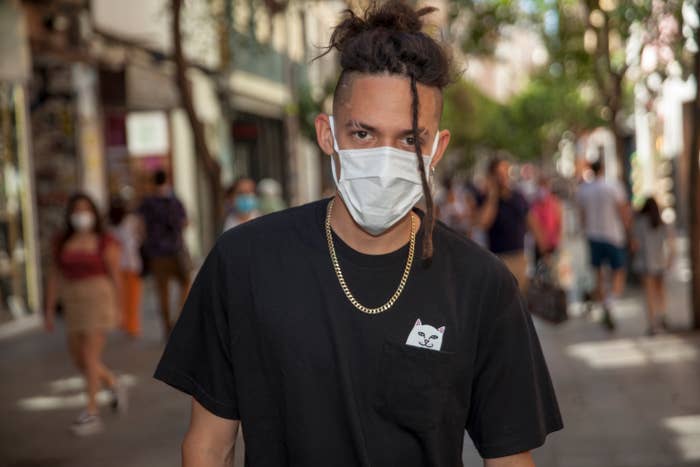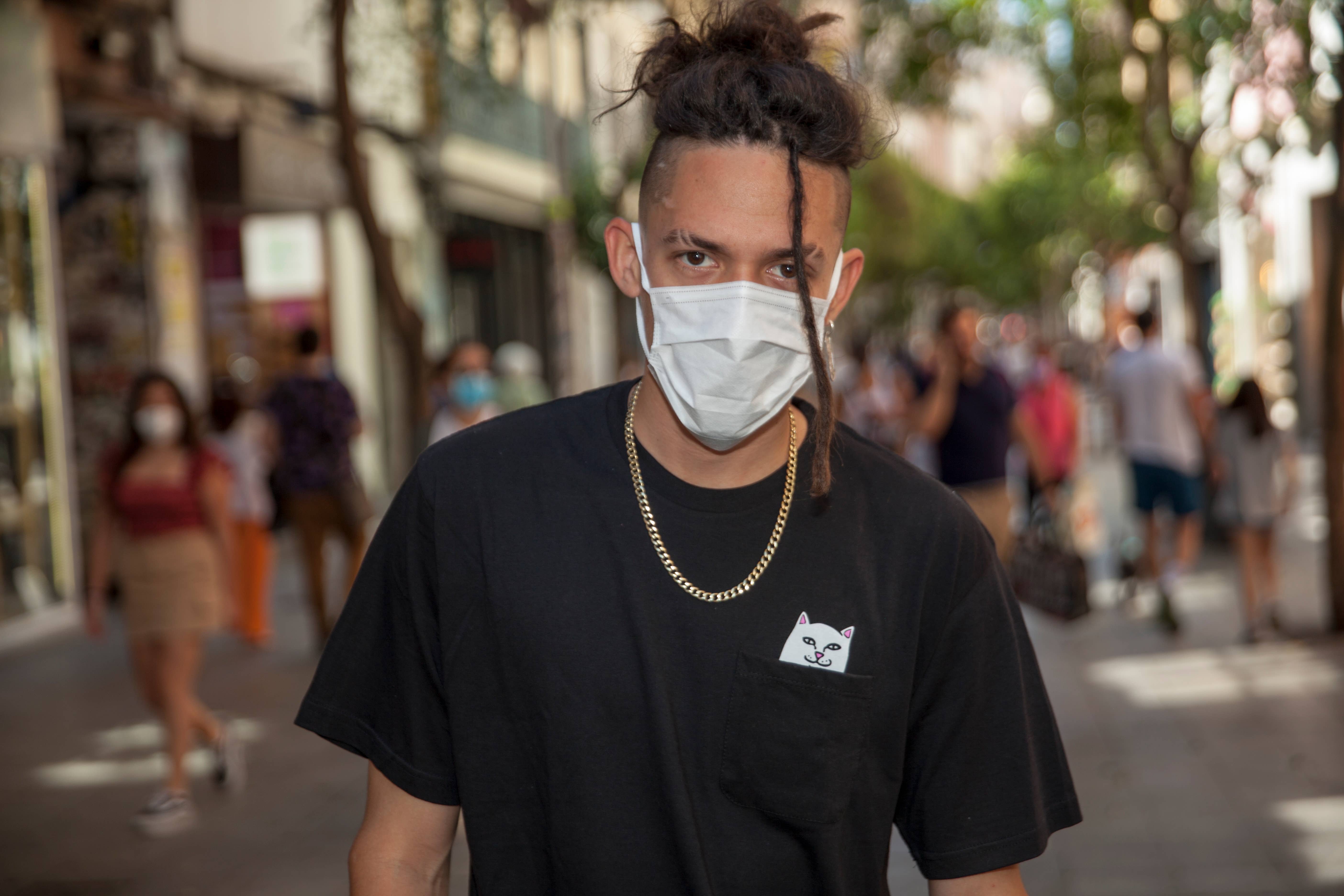
As long as people exist, there will always be pandemics and outbreaks. But has there been anything like the novel coronavirus in the last two decades? COVID-19 nearly brought the entire world to a standstill, and despite the fact that Atlanta strip clubs and hookah bars appeared to stay open, even as more of the country returns to business as usual, there’s no telling what the new normal will be.
Complex spoke with Dr. Robyn Gershon, epidemiologist and professor at NYU’s School of Global Public Health, who reminded us that we’ve already lived through several new outbreaks in the last 20 years. In 2003, SARS, an acute respiratory virus, claimed 774 lives in the US. 2009 brought the H1N1 virus, or swine flu, which resulted in 12,469 deaths. And who could forget the 2013 Ebola outbreak in West Africa? The virus had a 50 percent survival rate and killed 11,325 people—two in the States.
If the world’s been paying attention, the COVID-19 pandemic was nothing unexpected. And yet, it felt like we were all completely caught off guard. At the time of this reporting, COVID-19 has taken 3,886,347 lives worldwide, with 597,372 US deaths reported to WHO. It’s definitely the most intense pandemic most of us have ever experienced.
Now, New York City and Los Angeles, two of the hardest-hit areas in America, are bouncing back and opening up. But if the world should have learned anything from the last year, it’s that caution is better than carelessness. While social distancing and remote learning may largely be left behind, whether vaccinated or not, here are five things that one scientist confirmed we should all keep doing, even after the pandemic is long gone.
Before any anti-maskers get riled up, know that nobody is trying to normalize 24-hour mask wearing. But it doesn’t hurt to wear a mask when you’re feeling sick. In fact, Gershon says wearing a mask when you’re not well is simply good manners and proper hygiene. Keep your germs to yourself.
“It’s unquestionably incredibly important and valuable,” Gershon says. “You should absolutely continue wearing it if you have even the slightest hint of a cold.”
At the beginning of the pandemic, when we couldn’t find a roll of toilet paper to save our lives, there was also a mask shortage. That’s when many scientists announced that masks weren’t necessary. But that message changed once tests confirmed that masks actually help to reduce the spread of infected respiratory droplets.
Newer studies posted by the Center for Disease Control and Prevention show that, when worn correctly and consistently, even multi-layer cloth masks help protect us from exhaled viruses. And who couldn’t use an extra layer of protection during the flu months? Gershon adds that, during flu season especially, we should wear masks on trains and buses.
This might seem like an obvious keeper, but let’s not forget how many grown people living in the most technologically advanced parts of the world had to learn how to wash their hands at the start of the pandemic. And rinsing our hands for a few seconds after using the restroom just won’t cut it. We should continue washing our hands for 20 seconds with soap and water before we eat, when we come in from the outdoors, after we blow our noses, and when we finish doing things like changing kitty litter or touching trash.
“We are not, in the US, typically very hygienic compared to other countries, like Norway or Sweden,” Gershon says. “But we need to up our game now. We need to all chip in and come together and really be mindful. We can lessen the impact if we’re doing all these good things, like hand washing.”
The new COVID vaccines have everyone hyped up, but let’s not get too comfortable and forget about the other germs waiting to enter our bodies. Scientists have always preached about continuous hand washing.
Six years before COVID-19 put the world on lockdown, Harvard Medical School’s Health Blog reported on research from Aberystwyth University examining the cleanliness of shaking hands. In the test, two researchers put on sterile gloves and one person dipped their gloved right hand in harmless E.coli bacteria. Then they tested how much bacteria was transmitted from the infected glove to the non-infected glove with high-fives, fist bumps, and handshakes. You can guess which gesture was the filthiest—handshakes.
“For me, at least, handshaking is gonna take a long time to come back, and maybe never,” Gershon says.
In the Aberystwyth research, handshaking transmitted two times more bacteria than high-fiving and 10 times more than fist bumping. And when you think about it, do we really need to greet each other with sweaty palms? There are better and safer ways to say hello. The pandemic has already reduced the amount of personal contact we engage in. Leaving handshakes behind wouldn’t be a bad thing to do.
At the onset of COVID, every celebrity, influencer, and public figure had a public health statement. And when the vaccines started rolling out, more celebs used their fame to encourage others to get vaccinated.
Celebrities aren’t always the best folks to listen to, but when it comes to public health, Gershon agrees that we could all use a friendly reminder every now and then. “We all get a little lazy, or sloppy, or inured to the messaging,” the epidemiologist says. “That’s why it’s good to [have] new messaging constantly coming out.”
Since COVID-19 won’t be the last pathogen to appear out of nowhere, we can stay prepared with timely health reminders. Gershon says that public service health announcements are especially important for children and teenagers. The PSAs should consider people who speak different languages and should be accessible for people with hearing or visual disabilities.
Remember when Amazon sellers were hoarding and reselling hand sanitizers for $100 a bottle? Coming across alcohol-based disinfectants was nearly impossible. But after online stores and local governments began enforcing price gouging laws, hand sanitizers became a necessary staple in almost every public space. And we don’t see them going anywhere anytime soon.
People who believe that overusing hand sanitizer can create alcohol-resistant germs are wrong. “It’s a straight disinfectant killer. It’s like Lysol or Clorox,” Gershon says. “It straight out kills everything it touches.” So it has become one of our greatest defenses against COVID-19 and other germs.
Gershon adds that partitions have been erected on buses and in other public spaces like nail salons. These physical barriers are great items to continue using. Working and learning remotely, under certain circumstances, can be a helpful option as well. But as much as we’ve been separated, people are social creatures, and there’s nothing like human interaction and contact. As the world prepares for whatever is coming next, Gershon reminds all of us to follow the science, listen to scientists, and leave politics out of public health.
“We’re a resilient species, and we will continue to get through this.”

